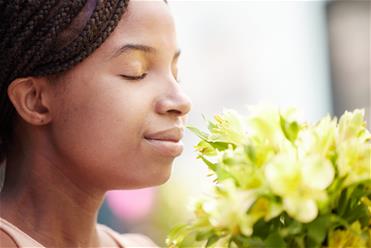Unveiling 5 Secrets of Spring Allergies: Facts and Combat Strategies

As the vibrant colors of spring start to bloom, so do the dreaded symptoms of seasonal allergies. For many, this time of year brings more than fresh spring air. It brings sneezing fits, itchy eyes and a general feeling of discomfort. Read on to learn surprising facts about spring allergies and explore practical tips to combat them:
1. Pollen: the main spring allergy offender.
Exposure to tree, grass and weed pollens is often to blame for spring allergies. The spread of pollen, which is carried by the wind, birds and insects, helps to fertilize plants but can make life more difficult for allergy sufferers. The powdery substance, produced as pollen by many plants such as oak, birch, cedar and ragweed, is harmless. Yet, if you have seasonal allergies, your body mistakes the pollen for something dangerous and tries to attack it. This allergic reaction can cause coughing, a runny or stuffy nose, and itchy, watery eyes. Symptoms usually last longer than those of a cold–approximately one to two weeks.
2. The role of climate change.
Trees and plants such as ragweed are producing pollen sooner because temperatures are getting warmer sooner. That means that pollen seasons are starting earlier and lasting longer. High carbon dioxide levels are also to blame for plants producing and releasing more pollen. With pollen seasons intensifying, allergy symptoms become worse and more intense.
3. Other spring allergies culprits.
While outdoor pollen gets much of the blame, indoor allergens like dust mites, mold, and pet dander can also prompt allergic reactions. This is especially true when you close your windows to keep outdoor pollen at bay. Clean and dust your home regularly, including bookshelves and vents. Declutter often and vacuum once or twice a week; if you have allergies consider wearing a mask while doing housework if you have allergies.
4. Practical tips to help ease your symptoms.
Check your local pollen counts daily and avoid the outdoors when pollen is high or during peak pollen hours (morning and early afternoon). Keep your doors and windows closed during peak hours to prevent outdoor allergens from sneaking into your home. If you spend time outdoors on days when pollen is high, shower and change clothes as soon as you return to remove pollen from your skin, hair and clothes. Additionally, wash your hands frequently to prevent allergens from spreading. Brush off your pets after they’ve been outside to prevent allergens from coming inside with them.
5. Other strategies to combat allergies.
Mow the lawn regularly to prevent too much pollen from releasing into the air. Cut your grass down to about two inches, and save your gardening and other yard work for late afternoon. Wear a face mask when you work outdoors and wear wraparound glasses to keep pollen out of your eyes. Remember to rinse off and wash your clothes to get rid of any pollen particles.
The takeaway.
While these practical tips can be helpful, you may need allergy medication to help you breeze through allergy season with ease. Your health care provider may suggest over-the-counter nasal sprays or decongestants. In more severe cases, you may need prescription medications or in some cases, allergy shots or other types of treatment. Make an appointment with your CHI St. Vincent primary care provider or allergist to better understand and treat the cause of your symptoms.
Sources:
- Seasonal Allergies | Causes, Symptoms & Treatment | ACAAI Public Website
- Don't Fear Spring Allergies and Asthma | American Lung Association
- What triggers seasonal allergies? | NIH MedlinePlus Magazine
- Pollen Allergy | Causes, Symptoms & Treatment | ACAAI Public Website
- Control Indoor Allergens to Improve Indoor Air Quality | AAFA.org
- Allergies are getting worse with climate change | News | Harvard T.H. Chan School of Public Health
